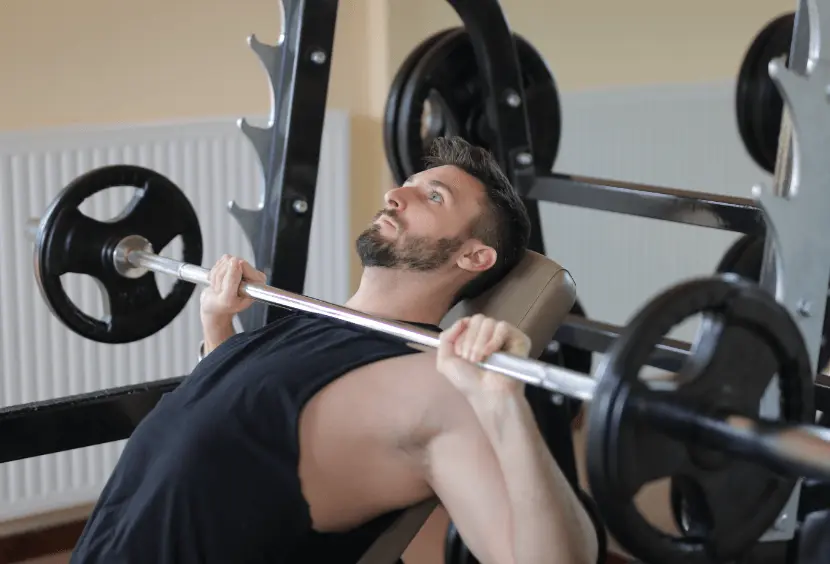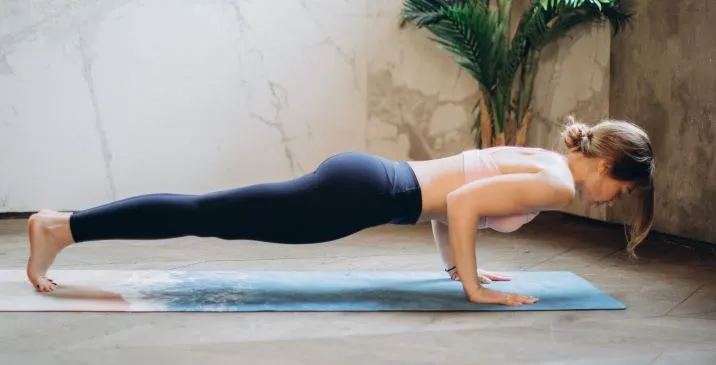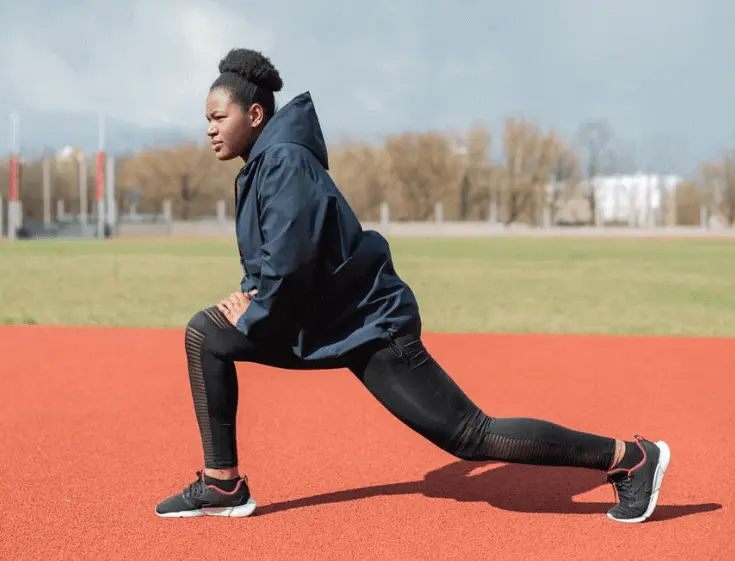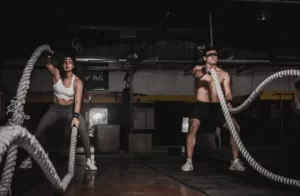The human body is consist of three types of muscles: cardiac, smooth, and muscles. The muscles present in the heart are the Cardiac muscles. Smooth muscles help in controlling functions like blood vessel constriction. Skeletal muscles are the ones you work out in the gym to help your body move. These muscles combined, account for roughly 40% of your body weight.
Understanding how your body’s various muscle groups work together will help you work out smarter.
Whether you’re new to strength training or have been doing it for a while, it’s important to be educated on how to get the most out of your workouts. For people with hectic schedules, training multiple muscle groups in one session makes more sense than training one muscle group at a time.
When trying to build muscle, it’s best to concentrate on specific areas of your body and the muscles that support them, rather than thinking about a bunch of different muscles out of context.
In general, the major muscle groups of the human body are as follows:
- Upper Body (Front) – Triceps, Shoulders, & Chest
- Upper Body (Rear) – Biceps, Shoulders & Back
- Back – Shoulders & Erector Spinae
- Core – Abdominals & Obliques
- Lower Body – Hip Flexors & Glutes
- Legs – Hamstrings, Quads & Calves
Best Muscle Group Workout & Combinations
Front and Back
Pulling movements are performed by your biceps in collaboration with your abs and back muscles while pushing movements are performed by your triceps in collaboration with your chest and shoulder muscles. Working out these closely related muscle groups at the same time is ideal because one can rest while the other works.
That means you can work both to exhaustion without taking long breaks that will sap your motivation. Alternating between bicep/back and triceps/chest/shoulder exercises allows you to fully exhaust both muscle groups, increasing hypertrophy after the workout to build greater strength and muscle growth.
Best Workout for Front and Back-
1. Incline Chest Press
This move provides many of the same benefits as a bench press but without the need to break form, adjust weights, or fiddle with bumper plates. Dumbbells and an incline bench set between 45 and 60 degrees are required.
Lie face up on the incline bench, feet flat on the ground. Pick up one dumbbell in each hand with an overhand grip (palms facing forward) and raise them above your eyes with your elbows almost straight.

Take a deep breath in and slowly lower the dumbbells toward your chest. When they get close to your torso, move them to the outside. Exhale and return the weights to the starting position, keeping your elbows directly beneath your wrists throughout the exercise.
2. Dumbbell Rows with One Arm
With this move, you can build a massive back. You only need a flat bench and a dumbbell. Set the dumbbell to one side of the bench where you can reach it, then return to the starting position.
Place your left leg on the bench and your left hand on the left side of the bench. After that, bend your torso until it is parallel to the ground. With your palm facing your body, pick up the dumbbell.
Hinge your elbow to bring the dumbbell up to your chest. Make sure to lift with your shoulders and back muscles, not your arms. In any case, the biceps will get a good workout.
Lower the dumbbell slowly back to the starting position. Complete all of your reps with your right arm before switching to the left side to repeat.
3. Triceps Kickbacks with Dumbbells
These kickbacks can be done with or without a bench. If you don’t have one, simply bend your knees and hinge at the hips until your forehead is nearly parallel to the ground.
Keep your palms facing each other and hold a dumbbell in each hand. Keep your spine straight and your elbows tucked in at your sides. Lift the weights until your elbows form a 90-degree angle, then lower them until your arms are straight.
When your elbows are straight, your hands should be slightly behind your body. Each time you return to the 90° angle, count off one rep.
4. Lat Pulldowns
Although the Lat pulldown machine is the most convenient way to perform this exercise, you can still give your latissimus dorsi a good workout by simulating it with a resistance band and a horizontal object such as a broomstick. Pulldowns are the best way to work that specific muscle.
If you’re using a machine, sit down and secure your legs with the pad. This resistance keeps the resistance in this exercise from pulling your body upward, which would prevent your body from building stronger muscle fibers as it does during resistance training.
With a wide reverse grip, grab the overhead bar. That is, with your palms facing backward. The reverse grip engages your back and forearm muscle groups while putting less emphasis on the biceps brachii, which improves overall strength and functionality.
Pull the bar down to the front of your chest by retracting your shoulder blades. Resist the urge to lean forward. To complete one rep, slowly return the bar to its starting position.
5. Overhead Barbell Press
This is a popular bodybuilding move, but it may require strength training with similar moves such as the seated dumbbell shoulder press. The overhead press, however, has a lot of muscle-building potential if you have the necessary strength and wrist mobility.
If you’re new to weightlifting, it’s a good idea to have a personal trainer or another experienced lifter nearby to spot you. Take the barbell off the rack and hold it shoulder-width apart, palms facing the ceiling.
Return the bar to shoulder level after pressing it directly overhead. Make sure your shoulder blades are squeezed and your head is tilted up so the barbell doesn’t hit your chin or nose.
6. Hammer Curls
Hammer curls work the biceps, brachialis, and brachioradialis, three separate muscles that are crucial for moving the elbow. Dumbbells are required for this move because kettlebells and other weights do not allow for the necessary wrist movement.
Make a straight back and stand with your feet together. Don’t lock your knees or back; instead, engage your core muscles for added stability. Pick up a dumbbell in each hand, the weights facing forward and behind you. Your palms should be facing your body, and your thumbs should be pointing forward.
Begin with the weights at your sides and slowly raise them until your thumbs are near your shoulders and your elbows are bent at a ninety-degree angle. To complete one rep, lower them back to the starting position.
Back and Core
Much of your body is stabilized by the muscles on both sides of your upper body. They attach to your spine and participate in every movement that occurs between your upper and lower bodies. Strengthening each will assist you in achieving better balance and avoiding injury.
If you want a 6-pack, you must also work on your back and oblique core muscles. Otherwise, your athletic and daily performance will suffer, and you will be much more prone to injuries. Fortunately, many of these exercises can be performed solely with body weight and do not necessitate the use of expensive equipment or a gym membership.
Best Workout for Back and Core-
1. Crunches
This simple exercise is an essential component of any training program aimed at increasing core strength. All you have to do is lay down on the ground with your feet hip-width apart and your spine and head aligned. Place your arms across your chest.
While engaging your core, relax your neck and shoulders. Tuck your chin into your chest and lift your upper back, leaving your lower back on the floor. Return to the starting position after rising as close to your knees as possible.
2. Plank
Planking is similar to a push-up, except your forearms will be on the ground instead of just your palms. It improves core and back strength, but it’s also a full-body workout that strengthens many muscles throughout the body.

Toes should support your lower body, and your elbows should be directly beneath your shoulders. Keep your body in a straight line from your head to your heels. Engage your glutes, core, and quads by driving your elbows into the ground. Hold that position for as long as possible before resting and repeating the exercise one or two times.
3. Mountain Climbers
Mountain climbers strengthen your core while also providing some cardio, which has numerous health benefits such as a better-functioning nervous system. They’re excellent warm-ups, cool-downs, or interval exercises for HIIT workouts.
Maintain the same stance as in the plank exercise described just above. Instead of remaining still, raise your right knee to your chest, taking care not to break your stance. Bring the left knee up to the chest as you lower the right leg back down.
Continue with the same number of reps on each leg to ensure even strength development.
4. Bicycle Crunch
This crunch variation keeps your abs under constant tension, making it ideal for reaching core muscle exhaustion. Put yourself in the same position you did for the crunch described earlier in this section.
Bend your right knee to your chest and extend your left leg, lifting it slightly off the ground. Raise your upper back and meet your left shoulder with your right knee. Return your left shoulder to the ground and switch leg positions, then repeat on the other side of the body.
Lower Body & Legs
Lower-body muscle groups, particularly the glutes, hamstrings, and quads, contribute significantly to our bodies’ functional strength. Building lower-body strength can help you avoid injuries that would otherwise make it difficult to get around or continue with your workout routine.
Leg day is an essential component of any bodybuilding program. Even if you build big arm muscles, you’ll need lower-body strength to avoid becoming too top-heavy.
Best Workout for Legs and Lower Body-
1. Lunges
You can use a resistance band to make this bodyweight exercise more difficult, or you can do the “walking” variation to get some extra cardio in during your workout. Lunges will target your quads, hamstrings, glutes, and calves.
Begin by standing with your hands on your hips or holding weights if you want to build upper-body strength as well. Take a large step forward with one leg, then continue to move your upper body forward by bending the leading knee to a 90° angle.

Your back knee should come close to but not touch the ground. Check that your leading knee does not pass your toes and that your back shin is parallel to the floor. To return to the starting position, push through your leading heel and repeat with the other leg in front.
2. Leg Extensions
Leg extensions are performed on a separate machine at the gym. Simply set your weight and enter the machine with the pad securing your thighs in place. Place your hands on either side of the bars and then lift the weight with your legs until they are almost straight.
Repeat the process after bringing back the weight down. This exercise primarily benefits the quadriceps.
3. Barbell Hip Thrust
You can substitute any weighted object that you can keep in position for the barbell in this exercise, which is a favorite of lifters who complete their routine from a home gym. Because it builds so much strength in the glutes, this move is also known as a glute bridge. It also works your entire backside.
Position yourself as if you were about to do crunches: back flat, feet hip-width apart on the ground. Place the barbell on your lap, right where your hips bend. Instead of raising your back off the ground as in a crunch, raise your hips by pushing through your heels.
Raise your hips until you have a straight line from your neck to your knees. Hold that pose for a few seconds before lowering your hips.
4. Bulgarian Split Squat
For this exercise, locate an elevated surface or bench. Place your right leg behind you and your toes on the elevated surface. Check your posture before slowly lowering your torso by bending your left knee.
When your left knee reaches a 90° angle, come to a halt. Your right knee should almost, but not quite, touch the floor. Return to the starting position and complete all reps on the left knee before switching to the opposite leg.
In Conclusion
Understanding how the various muscle groups in the human body interact can help you divide your gym day into modules for more even strength and muscle building. Working your upper body one day, core and back the next, and leg day the next will ensure that you have toned muscles all over your body.
The exercises in this guide are the most effective at targeting specific muscle groups, and there are numerous variations of each one that you can use when you need a change. Include them in your workout routine for increased muscle mass and better muscle activation.
